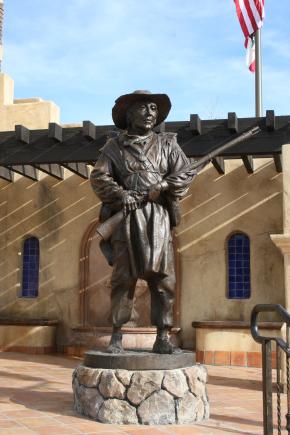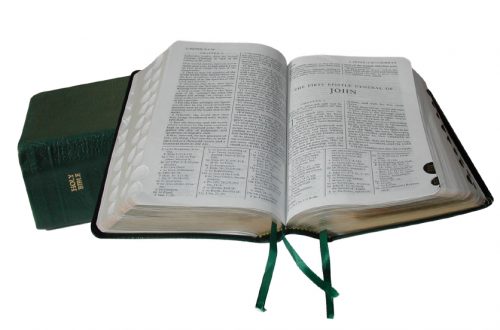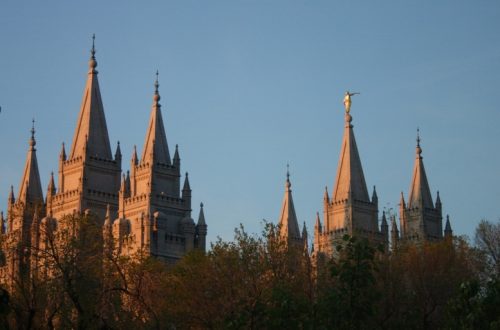
LDS.org’s Guide to planning an LDS Handcart Trek
The Church has come out with specific instructions for leaders planning handcart treks:
June 2009
Pioneer handcart treks for youth are a local option. Stake presidents and bishops decide whether handcart treks will be held in their area. The following guidelines are provided for stakes and wards that choose to hold a trek activity.
Handcart treks require significant planning and supervision to achieve meaningful purposes with minimal risks. Stake presidents and bishops should share these guidelines with all leaders who will be involved in the trek.
Leadership
Stake presidencies and bishoprics are responsible for and approve all trek plans. They may delegate specific responsibilities for planning the trek activity to qualified leaders, who work under their direction.
Planning
Handcart treks require extensive preparation and may take up to a year of planning. All plans should follow Church policies as outlined in the Church Handbook of Instructions, Book 2, pages 271–80, 321–28.
For a trek activity to be successful, leaders must be well trained and prepared. Where possible, a training trek for leaders is recommended. Leaders should ensure that parents are informed about trek activities.
As an alternative to holding handcart treks at Mormon Trail sites, leaders are encouraged to consider convenient sites on public or private land. When such sites are used, leaders should obtain the necessary approvals and ensure that the rights and property of others are respected.
In addition, leaders should give careful attention to the following:
- Spiritual development. Church activities should strengthen testimonies and foster personal growth. Leaders should ensure that the trek provides participants with opportunities to apply gospel principles and feel support in living them.
- Physical preparation. Handcart treks require physical stamina; thus, each participant should be encouraged to eat healthy food, exercise regularly, and get sufficient rest before the trek. Doing these things will enhance the experience for each participant.
- Physical and mental challenges. Some adults and youth who participate in the trek may have physical or mental challenges such as diabetes, blindness, advanced pregnancy, Down syndrome, obesity, or depression. Leaders should make preparations to accommodate any special needs for food, medication, equipment, supervision, or safety for these individuals.
- Age recommendations. Youth under age 14 usually do not participate in trek activities. (See the guidelines for youth conferences in the Church Handbook of instructions, Book 2, page 188.)
- Adult leadership. For strenuous youth activities, there should usually be at least one adult for every ten youth.
- Adequate food and water. Dehydration can lead to heat exhaustion, heat stroke, and death. Each handcart should carry adequate water for the participants. Leaders should make sure that youth take frequent breaks to drink water, and that nutritious food is provided throughout the trek. Store, prepare, and serve food safely to prevent food-borne illness. Chickens, turkeys, or other live animals should not be killed during treks.
- Adequate clothing and shelter. Participants should avoid wearing wet clothing, which can cause body temperature to drop rapidly and can result in hypothermia. To prevent sunburn, participants should wear sunscreen, long sleeves, wide-brimmed hats or bonnets, and sunglasses. To prevent blisters, participants should wear appropriate shoes that fit and are broken in, and socks that wick moisture away from the body. They should bring extra clothing and camping gear that are appropriate for cold nights, wind, and rain.
- Appropriate sanitary facilities. For groups larger than 15 people, trailer-mounted portable toilets should be provided and maintained in a sanitary condition. For small groups, human waste may be buried six to eight inches deep, 200 feet from water sources, campsites, or trails (carry out used toilet paper). Camps should be set up at least 100 feet from any stream or open water. Wastewater should be disposed of at least 200 feet from water sources. Trek groups should carry out all trash and refuse and leave camping areas cleaner than they found them.
- Local camping and fire regulations. Leaders should know in advance any local camping and fire regulations for the areas where they will stay. They should also know how to contact law enforcement and emergency services.
- Travel costs and distance. Leaders should follow the guidelines for activities and travel as outlined in the Church Handbook of Instructions, Book 2, pages 272, 279–80.
Safety
Leaders should take all necessary precautions to ensure that participants are safe throughout the trek activity. Leaders should focus on preventing illness or injury and also providing treatment if necessary. Safety precautions should include the following:
- All youth participating in the trek activity should complete a Parental or Guardian Permission and Medical Release form (33810). All participating adults should provide necessary information about medical conditions. Leaders should be aware of any participants with special needs.
- Licensed health care professionals should be present and available for the entire trek. At least one physician or other skilled health care professional should participate in each trek activity. In addition, one nurse or emergency medical technician (EMT) is recommended for every 50 to 100 participants.
- Sufficient first-aid supplies should be available to handle dehydration, heat stroke, sunburn, blisters, exhaustion, insect or snake bites, and severe allergies. There should be supplies available for intravenous rehydration. All adult leaders should be trained to monitor the hydration and general well-being of participants.
- Leaders should prepare a written emergency action plan in case of severe weather, lost youth, accidents, or other threats.
- Leaders should have a reliable and tested emergency communication system, such as a two-way radio and cellular phone.
- Participants should have continual access to emergency vehicles, such as sport utility vehicles with four-wheel drive and air conditioning.
- Leaders should be aware of the hazards associated with handcarts and ensure that they are well constructed and able to safely carry trek supplies.
- If handcarts are pulled on public roads or highways, ensure compliance with all local, city, or state ordinances governing their use and provide markings, such as reflective tape or slow-moving vehicle signs as required.
Source: http://www.lds.org/pa/display/0,17884,7995-1,00.html




